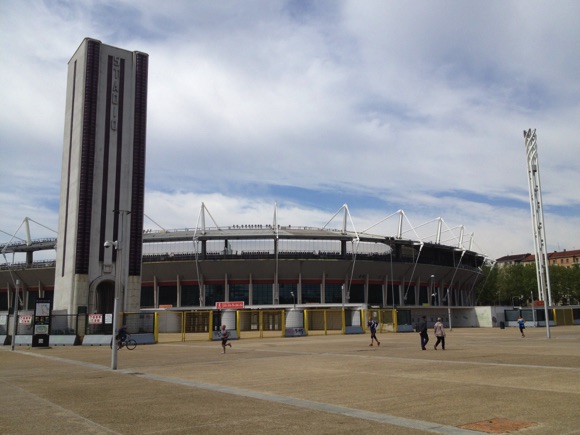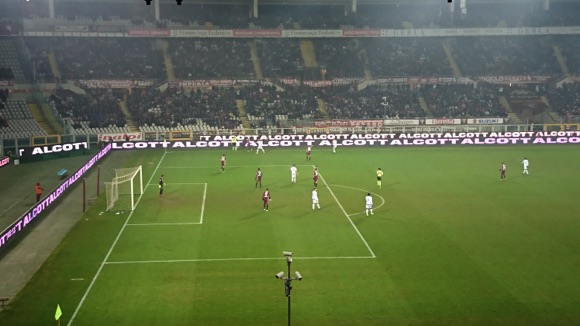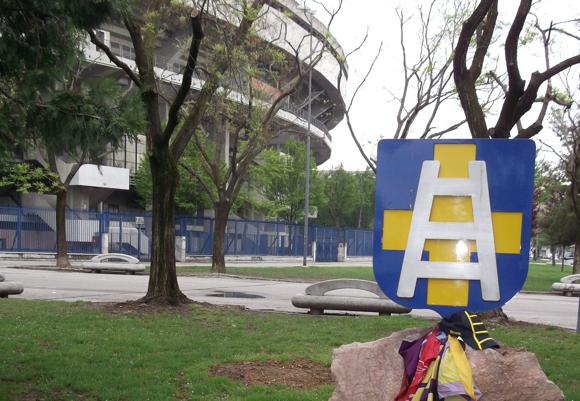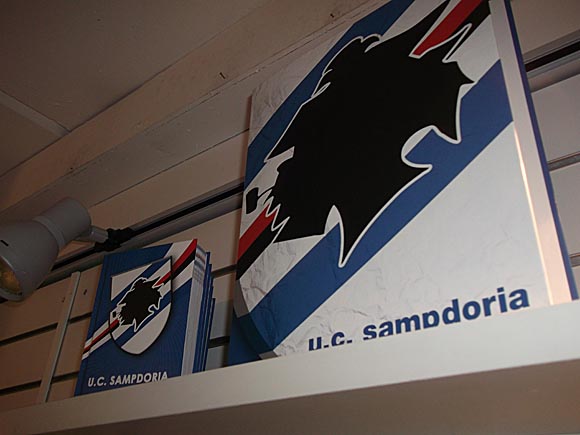A fan’s guide – the club from early doors to today
Taking the bull of Turin as their symbol, disgruntled members of Juventus met at the Voigt brewery on via Pietro Micca in December 1906 to form Torino. Among them was later World-Cup winning coach Vittorio Pozzo, who led Torino for ten years before his stint as national team manager.
It was Pozzo who pulled the strings in 1942 for Torino to sign inside-forward duo Ezio Loik and Valentino Mazzola from Venezia, whose telepathic understanding was uncanny – they were even born on the same day in 1919.
This formed the basis of the Grande Torino side of the 1940s, lighting up Torino’s beloved old Campo Filadelfia. Playing an intelligent 4-4-2, and forming almost the entire Italian national side, Torino won consecutive titles by considerable margins.







Approaching a fifth title, they flew to Lisbon to play a testimonial friendly with Benfica – and flew back into the hilltop Basilica of Superga outside Turin. Pozzo had to identify the bodies.
The Granata duly moved from Filadelfia to groundshare with Juve at the Stadio Comunale. Genial prodigy Gigi Meroni then led a Toro revival until his fatal accident on corso Re Umberto in 1967.
A decade later, forward partnership Paulo Pulici and Francesco Graziani gained Toro an emotional, post-Superga title. Providing the goals was Claudio Sala, an ever-present that decade. The 1976 title went right to the wire, Toro beating Juve in a crucial derby near the end.






Although runners-up two years running, and regular competitors in Europe, Toro had to wait until 1992 for their first European final. With home-grown Gianluigi Lentini and Belgian Enzo Scifo, Torino lost to Ajax in the UEFA Cup Final, Lentini later suffering a near fatal car crash.
Having lost top-flight status through financial problems in 2005, Torino continued to flit between Serie A and B. The Comunale was converted into the Stadio Olimpico for the Winter Olympics of 2006. In turn converted for football, it now goes by the name of the Stadio Olimpico Grande Torino.
Maintaining a link with the club’s heritage, the long-dilapidated Stadio Filadelfia was finally revamped and reopened in 2017, and now contains the club’s headquarters and training pitch. It’s a short walk between the two iconic grounds.






Toro rejoined the elite again in 2012 – and have stayed there since. In 2014-15, they competed in Europe for the first time in two decades, achieving a memorable win at Athletic Bilbao in the Europa League.
Key to this recent revival has been Andrea Belotti, who scored 26 Serie A goals in 2016-17, when he was named team captain at 24 and began to earn his many caps for Italy. The striker’s goals then helped Torino gain another European place in 2019, facilitated by a ban on Milan entering. His goals in each leg against Wolves were not quite enough to push Toro past the play-off round of the Europa League.
A regular for the Azzurri, Belotti came on late in the Euro 2020 final against England, missing a penalty in the shoot-out but picking up a winner’s medal. The last (and only other) Torino player to play an active role in a major Italian triumph had been Giorgio Ferrini at Euro 68.






Stadium Guide
The field of dreams – and the stands around it









The former Stadio Comunale (and originally Stadio Benito Mussolini) is now the Stadio Olimpico Grande Torino, used almost exclusively by Il Granata and occasionally for rock concerts.
As a plaque outside on corso Sebastapoli describes, the stadium was built by Mussolini for the Giochi Littoriali in 1933. With its key feature of the Marathon Tower, the Mussolini hosted games by the great pre-war Italian national and Juventus teams. The post-war Comunale also hosted great Italian, Juve and Toro games but fell into disuse when the Stadio delle Alpi was built for the 1990 World Cup.
Revived and rebuilt for the Winter Olympics of 2006, and converted thereafter for use as a football ground by Juventus and Torino, the renamed Olimpico today holds 28,000.


The Marathon Tower remains, rising high over the home end, or Curva Maratona (or Curva Nord, yellow). Visiting fans are allocated a section between the opposite Curva Primavera (green) and the Distinti Granata (red). The best seats are found in the Tribuna Granata, suitably also named the Tribuna Grande Torino.
With the Olympic Park to your right, you can make out the Alps ahead in the distance. Note the umbrella deposit at the gate – no umbrellas allowed in foggy, rainy Turin.





Once a ghostly ruin, Torino’s revered Stadio Filadelfia is set on the street of the same name a short walk from the Olimpico. The Filadelfia was opened in 1926 and played host (along with the Stadio Mussolini) to the Grande Torino side that dominated the Italian game in the 1940s. This was where Loik and Mazzola wowed the masses in wartime.
All the players perished in the Superga air crash of 1949 – neither Torino nor the Filadelfia ever fully recovered. Il Toro last played here in 1963 (their last goal scored by later World-Cup winning coach Enzo Bearzot).
After many attempts to revive the arena, where Toro fans gather every May 4 to mark the Superga anniversary, the Filadelfia was eventually rebuilt and reopened in 2017. The pitch is used for training sessions, alongside the new club offices, with a museum also planned.






getting there
Going to the stadium – tips and timings


If you’re arriving into Porta Nuova station, turn left into via Sacchi, and cross the tram tracks for the stop on line 4. The tram will take you back along the station building, down via Turati that becomes corso Unione Sovietica. It takes 10-15mins to reach the rond-point of San Gabriele. Walk right down via Filadelfia – left takes you to the old Toro stadium.
Tram 10 runs from Porta Susa station to corso Agnelli, the main street that runs parallel to the Stadio Olimpico. This is closer to the main stadium and also allows access to the club shop.
getting in
Buying tickets – when, where, how and how much


The main ticket office is on corso Sebastopoli (Mon-Fri 10am-1pm, 2pm-6pm and 2hrs before kick-off). You must provide valid ID before purchase.
For all enquiries, contact biglietteria@torinofc.it.
For lesser opposition, the cheapest tickets in the Curva Maratona or Primavera are as cheap as €10, rising to €15 in the Distinti Granata. A decent seat in the Poltroncine Granata is €30, €60 in the Tribuna d’Onore and €90 in the Tribuna Grande Torino. For A-category opposition, prices rise at least 20%.
what to buy
Shirts, kits, merchandise and gifts





The main Toro outlet is right in the city centre, the Granata Store (Tue-Fri 10.30am-1pm, 3.30pm-7pm, Sat 10.30am-1pm, 3pm-7pm, Sun 3.30pm-7pm) at piazza Castello 10. It’s hidden away in an arcade, opposite door 9 and near the orange taxi sign, close to via Po. There are china bulls in the Toro shop, dressing gowns, replica shirts and pictorial histories of Il Grande Torino. In the window is a large image of Valentino Mazzola, the last photo ever taken, in Lisbon in May 1949.
Another Granata Store (Mon 4pm-6.30pm, Tue-Fri 10.30am-12.30pm, 4pm-6.30pm, match days) operates at corso Agnelli 24A by the stadium.
Where to Drink
Pre-match beers for fans and casual visitors







The nearest outlet to the stadium is a snack kiosk on corso Sebastopoli directly opposite the main ticket office, the Bar-Paninoteca Olimpico – a generous spread of tables and chairs outside, and range of bottled beers, means this is closer to a makeshift bar.
Close by on corso Agnelli is a string of cafés of varying pre-match suitability. Closest to the new club shop at 24A, Caffé LÉ and Enoteca 14 can provide alcohol but no atmosphere, one a bland café with a map of Scotland on the wall, the other more a wine store with an area for sampling the goods.
At the junction with corso Sebastopoli you’ll find a pleasant pizzeria, All’Oca Di Pulcinella and, just round the corner on Sebastopoli itself, the Serafina, a contemporary version of a classic retro Italian café/eaterie that appeals to an older clientele nonetheless. On the same corner, the Wine Bar, the former Bar Cristallo, offers the usual panini and sticky cakes, though can provide Vikingen beer ‘imported from Germany’.





On the other side of the stadium, where Sebastopoli meets corso Unione Sovietica, the Bar Derby’s (Sebastopoli 73) should be a more suitable choice, a calcio-crazy hotbed of football talk. Instead, it’s just another bland Italian bar given a superfluous apostrophe in its name to make it sound English and hip. On the same stretch of Unione Sovietica, the Old Monk is another faux pub that opens after 7pm. The Dorian Grey nearby on via Tunisi is on similar lines, though perhaps a little more imaginative.
Alternatives near the stadium include the bar/cafeteria outside the swimming pool on corso Galileo Ferraris, G Square, and the nameless little bar for an age-old supporters’ group, tucked in within the stadium grounds just off via Filadelfia.






Filadelfia itself, now that the stadium is reopened, has a far better range of Torino-focused bars. the Sweet Café immediately opposite the stadium is a popular Toro meeting place – presumably why it was firebombed by Juve fans before the derby in 2016.
A few doors down, the one-time Capriccio, now Fragole & BARbera, is easily the best choice of pre-match imbibery, one part bar, one part restaurant, decorated with archive photos of the Grande Torino side of the 1940s, plus framed shirts.
Further along, on the corner with via Pasquale Paoli, the Bar Filadelfia is large, prominent, bland and forgettable – but for the name.



























